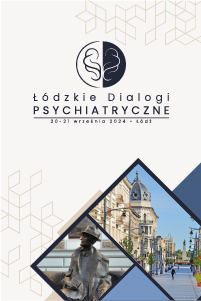The effect of quetiapine on the in vitro serum concentration of free thiols and thiobarbituric acid-reacting substances
 Affiliacja i adres do korespondencji
Affiliacja i adres do korespondencjiQuetiapine, a second generation antipsychotic, has no significant effect on the occurrence of tardive dyskinesia or other motoric disorders whose aetiology may be related to a pro- and antioxidative imbalance. The mechanism of quetiapine effect on the oxidative stress biomarkers remains unknown. The aim of the study was to establish the effect of quetiapine, administered in doses recommended in the treatment of acute phase of schizophrenia, on lipid peroxidation measured by levels of thiobarbituric acid reactive substances (TBARS) and on free thiols in human plasma in vitro. Material and methods: Blood samples were obtained from 10 healthy volunteers – males and females aged 24–26 (mean 25, SD = 0.6) and placed in the ACD solution. Quetiapine was dissolved in a 0.01% solution of dimethylsulfoxide to reach the final concentration of 400 ng/ml and incubated with plasma for 24 h at 37°C. For each experiment a control test (without drug) has been done. Thiol levels were evaluated by the Ellmann method and the TBARS concentrations by the spectrophotometric Rice-Evans method. For statistical analysis we used the t-test (Statistica 6.0, StatSoft, Inc.). Results: Quetiapine at 400 ng/ml shows antioxidative properties causing an increase of plasma free thiol level and decrease of plasma lipid peroxidation.






















